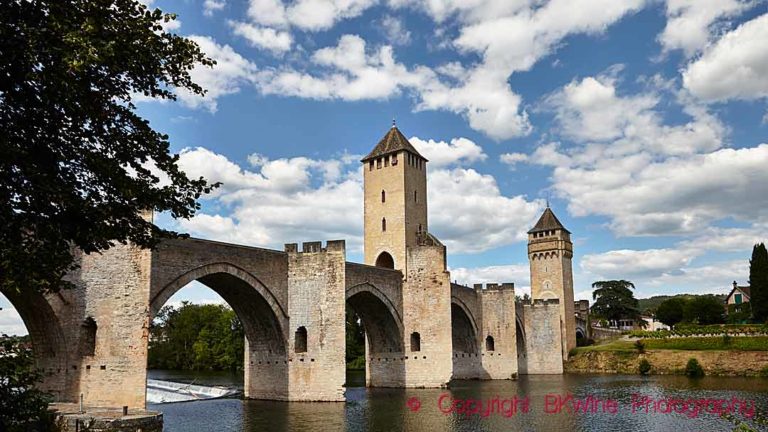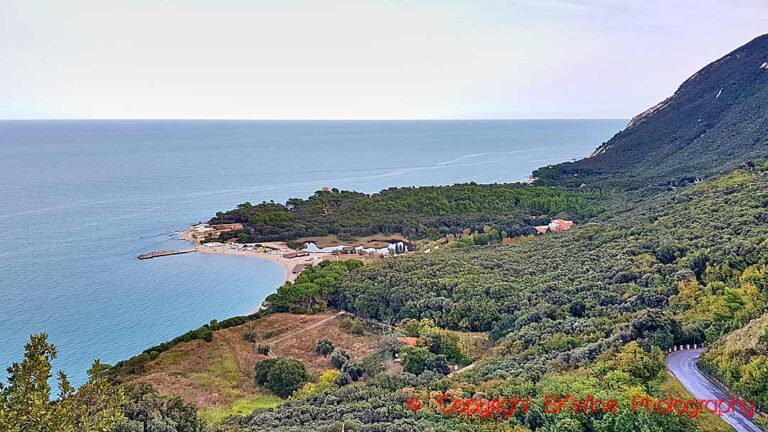Something new happening in Alsace?
Yes, is my answer to that question after my visit to the annual wine fair in Stockholm arranged by Vins d’Alsace in cooperation with Sopexa. 28 exhibitors / producers, both old and new for Sweden, left many impressions which I would summarize in:
- Very varied wine styles
- Broadening of the range
- more grand cru wines
- Crémant d’alsace almost everywhere
- Pinot Noir wines made by many producers
- Increasing share of organic and / or biodynamic wines
The wine styles ranged from very dry to very sweet, not counting vendange tardive wines. I could trace a tendency for increased residual sugar levels. If this is a trend in Alsace today, as a result of a number of warmer years (most wines tasted were 2013 or 2014), or if it is an attempt to adapt the wines to the Swedish market’s taste one can only speculate. Alsace is traditionally known as an area of dry wines although residual sweetness of pinot gris and Gewurztraminer has been noticeable due to the normally lower the acidity in these wines.
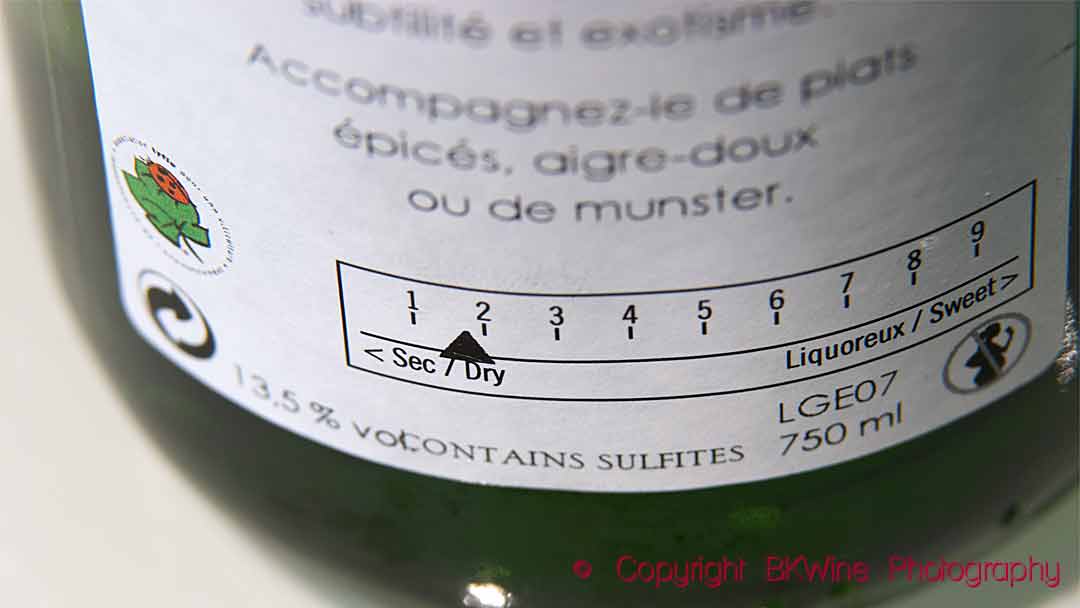
To broaden the range is the conventional way to reach more people’s taste and thus get more clients, i.e. more sales. Competition in Alsace might play smaller role than competition from the rest of Europe, mainly from the rest of France, Germany and Austria.
Everyone wants in one way or another to raise the status of their wines and role models are of course Burgundy with its different classifications of vineyard locations, crus.
In Alsace there is since 1983 a grand cru classification which today comprises 51 vineyard locations. They are of varying quality and sometimes very scattered. In total, these 51 “vineyards” represent only a small part of the region’s production area of AOC wines with a total of 15 000 ha.
The grand crus produce about 40 000 hectolitres roughly equivalent to 4% of the total in Alsace.
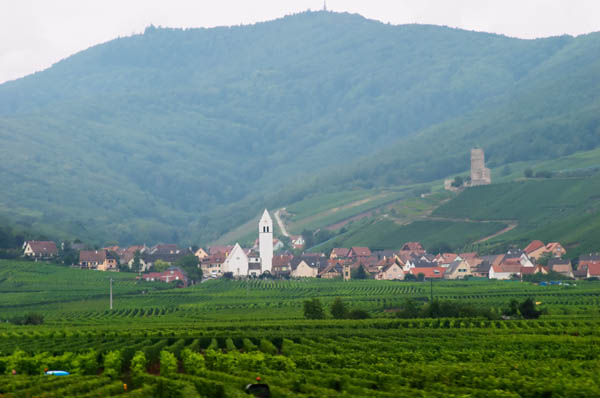
Of interest is that some producers have chosen to remain outside this classification in particular some that consider that their own high-quality wines are so well established that a grand cru designation does not add anything or when a grand cru designation currently is impossible due to existing vineyards planted with field blends that they want to preserve.
One of these producers, Hugel, has instead begun using their own terms, grossi laüe, to denote a top location, probably influenced by the new designations in Germany, erste Lage and grosses Gewächs. This new classification in Germany has not been without controversy.
This with vineyard classification has always been controversial, especially when it comes to field blends, where the different grape varieties grow mixed and are harvested together which means that, for example, the grower does not have precise control over the proportions of the different grapes that are included. There are some exceptions where field blends are permitted in the grand cru vineyards, but for example Marcel Deiss has long struggled to get many of his vineyards approved to be classified as grand cru without success. Deiss’ best wines instead carry only the vineyard name.
Grand cru wines account for about 4% of the production volume in Alsace but today AOC Crémant d’Alsace represents a full 25% and is thus very important. With about 250 000 hectolitres annually it reaches almost a tenth of the annual production in Champagne. In Alsace they use pinot blanc, riesling, pinot gris, Chardonnay and Auxerrois for crémant grape varieties, as well as pinot noir, which may be used in both the white and is also the only grape for rosé crémant. AOC Crémant d’Alsace was established in 1976, but sparkling wine was produced long before with the méthode traditionnelle, ie the same as in Champagne with a second fermentation in the bottle. The ageing time on the lees, however, is usually shorter than in Champagne.
The third phenomenon, pinot noir wines, is interesting from several aspects. The grape is far from new in Alsace. Red grapes was grown very early here and were common in the Middle Ages, including pinot noir. Knowledge of the grape, however, weakened over the years, mainly through the many problems and devastations that have long plagued this border area. The grape accounts for about 10% of the total production area, but it should be remembered that a large part of the grapes is used for the crémant d’Alsace.
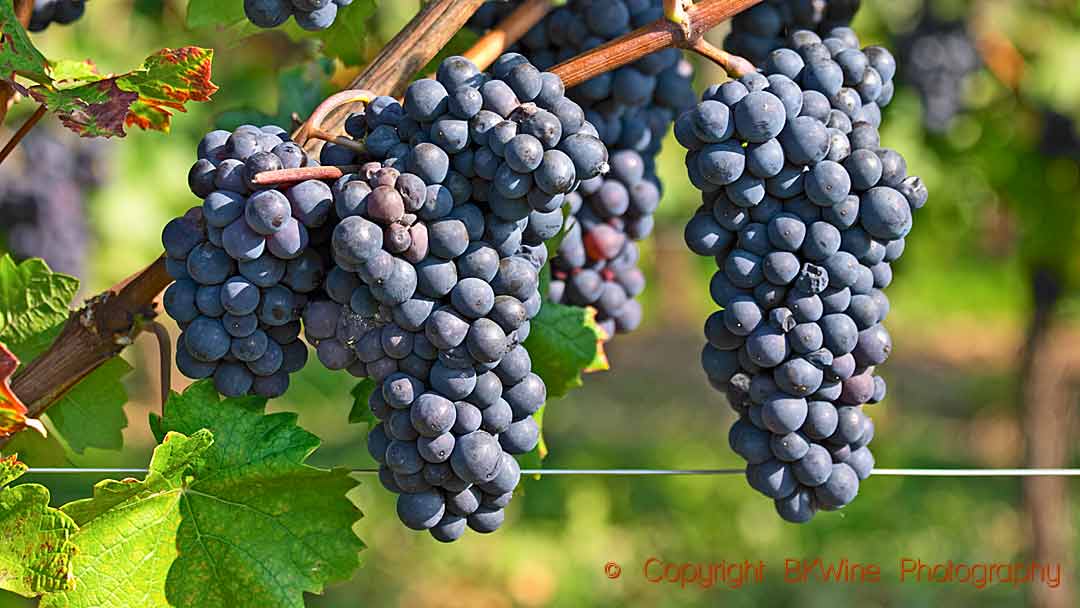
As I mentioned earlier, there were pinot noir on tasting at many of the exhibitors, so the production of red pinot noir wines is increasing, but not as fast as in Germany, for example. The conditions for making great pinot noir wines of Alsace is in many ways ideal, so why not increase even higher?
In addition to experience of the grape, which takes time to build, there are other factors that contribute, and they are partially interlinked. Pinot noir is a very sensitive grape and has many different clones that work in different microclimates. The wrong choice can be disastrous. To grow pinot noir thus implies a greater risk than the traditional white grapes of Alsace.
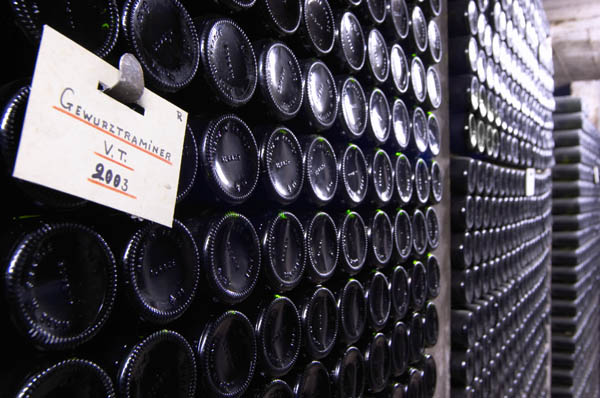
Another factor linked to risk-taking is the grand cru concept. Today pinot noir wines made from grapes from the Grand Cru vineyards may not be labelled as grand cru. So the grower can probably get better prices from his white grand cru wines than what he can get for his pinot noir. So why take the risk? A change seems to be needed; a number of farmers will apply in the coming years to use grand cru status for pinot noir in some locations, so keep your eyes open. Any year now we may see a red grand cru in Alsace!
Another clear trend was that organic and biodynamic wines are more and more common. One reason for this, in addition to increased demand, may be that most producers at the fair were small farmers who find it easier to switch their production to mainly biodynamic farming.
Almost all of the wines I tried were biodynamic and / or organic and most had some sort of certification.
Domaine Michel Fonné
Among the completely producers biodynamic Domaine Michel Fonné, in Bennwihr, caught my attention whose wines consistently kept a high quality without excessive sweetness. The winemaker, Michel Fonné, produces wines on 12 hectares from 7 different grapes. The vineyard is certified sustainable and has the Tyflo Ladybird symbol.
Riesling 2013 Rebgarten is made of grapes from 55 year old vines. The wine was delicious, with mineral tones and good balance. Excellent with fish and light poultry.
Pinot Blanc 2014 Tradition, ~10 euro, had good freshness and is excellent with seafood or as an aperitif.
Muscat 2014 Tradition is a dry muscat that feels spot on with white asparagus.
Pinot Gris Tradition 2014, ~11 euro, had good varietal typicity (mushroom, forest, earth), was delicious, had a good balance, and residual sugar of 5 g/l. Goes well with cheese, flavourful fish or some lighter game.
The range also included a Gewurztraminer Grand Cru Marckrain 2010, ~20 euro, excellent with a good acidity that gave it a fine balance. For cheeses, fruit desserts. The Marckrain vineyard is approximately 50 hectares and is located near Bennwihr. Soil is primarily limestone marl.
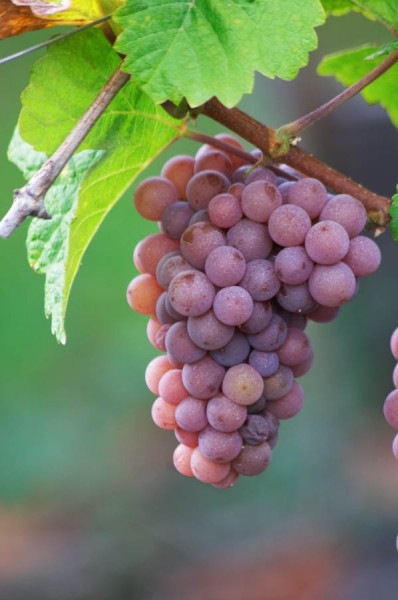
Jean Bichier & Fils
Another interesting small producer is Jean Bichier & Fils in Sant-Hippolyte who in collaboration with Julien Schaal has developed a couple of really good grand cru wines. Both were biodynamic.
Alsace Grand Cru Altenberg de Bergheim Complantation 2013, ~21 euro, very tasty with hints of honey and just enough acidity to challenge the relatively high sugar content. The wine comes into its own with foie gras or flavourful cheeses, like Pont l’Eveque.
The vineyard is about 35 ha with southern exposition and calcareous soils with high fossil contents. This wine is an exception where a field blend is allowed. The wine contains Riesling and gewurztraminer.
Alsace Grand Cru Riesling 2014 Rosacker is the flagship of the collaboration with lots of minerality, hints of apricot and citrus and a nice acidity, good structure. A lovely wine with hard cheeses and goat cheeses. The Rosacker vineyard is one of the best in Alsace with very calcareous soil and great exposure to the southeast, about 25 ha big.
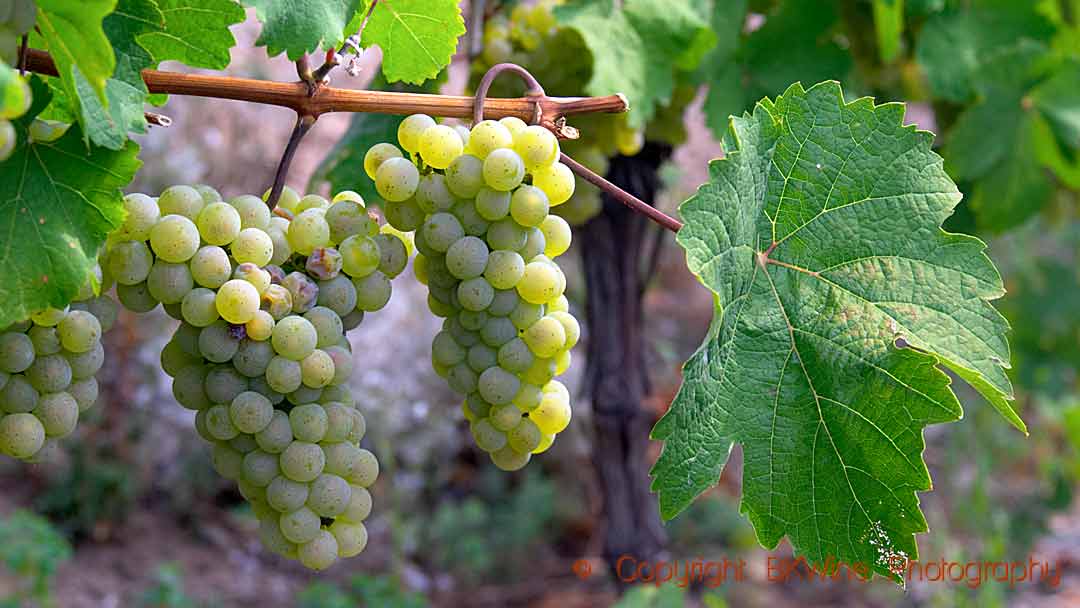
Hugel
Famille Hugel is always reliable with its entry level Hugel Gentil, ~12 euro, and the Classic range. It might interest you to know that Gentil is an old Alsatian term for a cuvee of the best grape varieties in Alsace. In this case they use the mainly Sylvaner that is otherwise more common in Franconia.
An enjoyable novelty for me this year was the Riesling 2010 Grossi Laüe, a very good riesling with power, pure fruit, some minerality and a lovely balance between acidity and sweetness. A wine tasty with fish or seafood, now or after a few years in the cellar.
As mentioned above, Hugel does not participate in the grand cru cooperation, but the grapes for this wine has been grown in a central part of the grand cru vineyard Shoenenbourg, with soil that is ideal for mineraly wines.
The other excellent wine at Famille Hugel was the Gewurztraminer 2010 Grossi Laue that left a big impression with a generous but elegant scent of flowers, a soft honeyed flavour with a tangy twist and a very long finish. This wine goes very well with foie gras as well as with the cheese board with blue cheese. The grapes are grown in the grand cru Sporen that has an eastern orientation and very phosphorous soils that produce tasty elegant wines.
At Hugel one could also try a very well made pinot noir that belonged to the series “Famille Hugel Classic” and that showed that it is possible to make high-quality pinot noir in Alsace if you are careful in the entire process from the vineyard to the bottle. The wine is fresh with pure fruit and not more tannins than to give it a good structure. In Europe the price tag is around € 15.
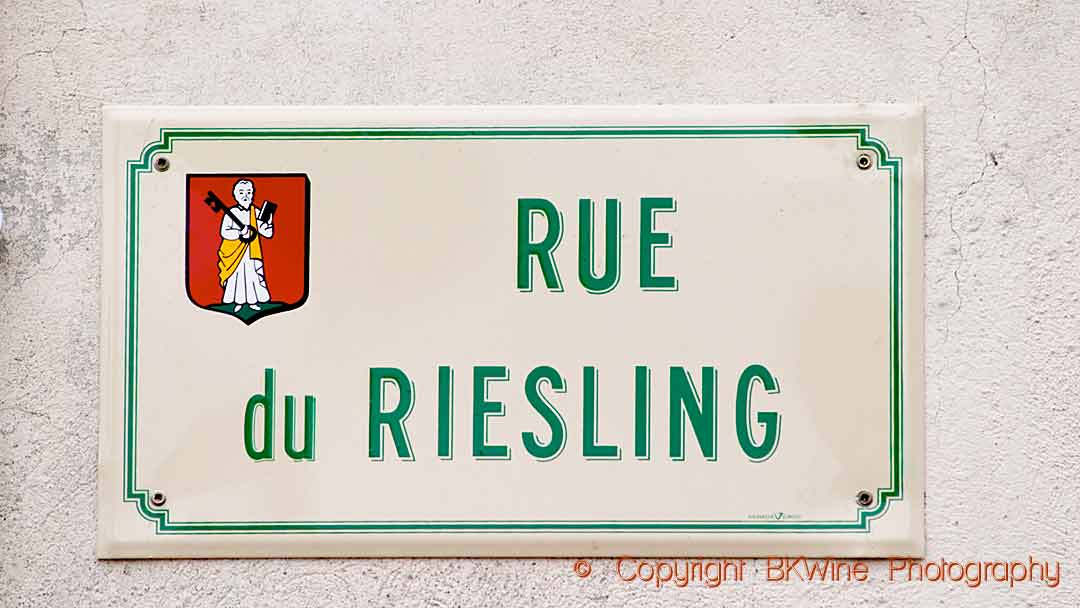
Marcel Deiss
Another producer who systematically produces some of the best wines from field blends is Marcel Deiss in Bergheim who goes his own way. He believes that field blends and biodynamic farming are step to get the maximum out of the vineyard into the final wine. He has worked organically for many years.
He only specifies the vineyard, the vintage and the producer on bottle.
There were wines from Langenberg, Engelgarten, Schoffweg and Grasberg all with different styles depending on geography and microclimate. In truth terroir wines that were very expressive!
Best in my taste was Grasberg 2011 that had a lot of everything, including finesse. Well worth its almost 40 euro. Grasberg is a Deiss vineyard perched on Altenberg de Bergheim, facing northeast. Very thin calcareous soil with fossils.
Langenberg, the coolest of locations has lean granite soil. It was delicious, had a fresh acidity and fine minerality. This was the first field blend that Deiss made on granite soil.
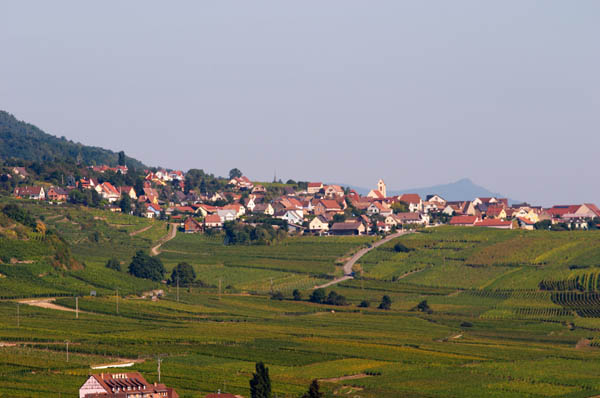
Domaine Weinbach
At Domaine Weinbach-Famille Faller in Kaysersberg, I found a very typical Gewurztraminer Cuvée Laurence 2013, powerful yet elegant in both aroma and taste. Medium acidity and 29 grams of residual sugar per litre makes the wine suitable for aperitifs, Asian food or cheeses like Pont l’Eveque. The grapes are grown one limestone marl at the Altenbourg.
There was also a Gewurztraminer 2014 Cuvée Théo that impressed with a nice balance and good structure.
Another wine from the same grape was the Grand Cru Fürstentum 2013, with 48 g / l residual sugar; it felt as if it would be a perfect match with fresh foie gras.
Fürstentum is one of the best locations in Alsace with soil of limestone marl and sandstone that provides both power and elegance to the wines.
Since 2005, all Domaine Weinbach’s vineyards are organically managed.
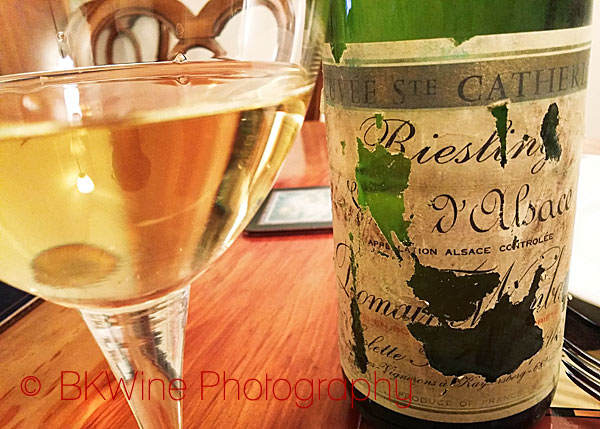
Wolfberger
A producer who was hard to miss was Wolfberger. They are actually a cooperative and one of the largest ones in Alsace, even the largest in terms of grand cru vineyards with 15 different ones on their list.
The cooperative currently has 480 winegrowers who together have 1200 ha of vineyards. It invests heavily in sustainability and has a large number of organic wines.
I liked the Wolfberger Crémant d’Alsace Brut, ~14 euro. Pinot blanc and chardonnay 80 / 20. Lovely freshness and great balance with 8 grams of residual sugar.
Furthermore, I found:
Pinot Noir Tradition 2014, crisp and elegant.
Grand Cru Rangen Riesling 2012, ~45 euro. Very elegant and balanced with some spiciness and a great choice for a tasty fish or flavourful cheese. Rangen is one of the best vineyards in Alsace, facing straight toward the south, is very steep and composed of volcanic rocks. Particularly well-suited for Riesling.
Grand Cru Muenchberg Riesling 2013, ~20 euro, also takes grapes from volcanic soil on south facing slopes on Muenchberg. The wine is flavourful and balanced and more affordable than the Rangen.
More producers
Some additional wines from small producers which I thought were really good:
Domaine Bernhard Reibel Chatenois, Pinot Gris 2014 Hahnenberg, ~18 euro, very fresh for a pinot gris. Well balanced. Organic.
Albert Schoeck / Jean Geiler Ammerschwihr, Crémant d’Alsace Brut Rielsing, ~14 euro, very fresh and tasty. The producer featured an Alsace 2014 at ~8 euro, an excellent entry-level wine.
Grand Cru Riesling 2010 Mambourg, fresh and pure tasty fruit and mineral notes. A typical Alsatian riesling from a good year. Mambourg is one of the largest grand cru vineyards with just under 62 ha and limestone marl soil.
La Cave des Vignerons de Pfaffenheim had a delicious vendange tardive Gewurztraminer 2011 Cuvée Saine Catherine, ~21 euro (375 mL).
Chateau de Riquewihr Domaines Dopff & Irions Grand Cru Schoenenbourg 2011: lovely with pleasant spiciness, freshness and balance. Goes well with richer fish dishes or strong cheeses. Schoenenbourg is one of the best grand cru locations with limestone marl with some gypsum.
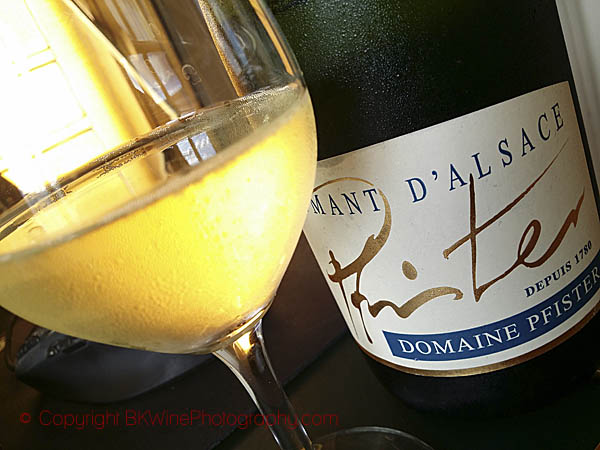
Domaine Pfister in Dahlenheim showed a delicious dry riesling from Engelberg, Grand Cru Engelberg Riesling 2012. Engelberg is known as a quite good but not top-notch grand cru location with soils of limestone marl. Exposure to the south.
Finally I want to mention Bott Frères in Ribeauville whose pinot noir may form some sort of final scene in the hope that many more of the good pinot noirs, like this, will now show up in Alsace.
Pinot Noir 2014 Tradition, at about 10 € at the winery. Elegant wine with pure fruit, good acidity and soft tannins from gentle use of oak barrels and further ageing large barrels (foudres).
Carl-Erik Kanne is a long time wine enthusiast and fervent wine taster. He reports from wine tastings and wine events in Stockholm for BKWine Magazine.



